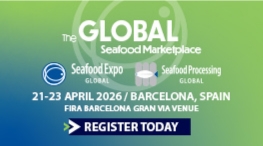Navigating reform and resilience
This article was featured in Eurofish Magazine 3 2025.
Changes in legislation, investments in infrastructure, and restoration of the environment are some of the ways in which Romania is upgrading its fisheries and aquaculture sector to better equip it to deal with challenges and opportunities both today and in the future.
In recent years, Romania has made significant progress in modernising and strengthening its fisheries and aquaculture sectors, explains Marian Avram, former president of the National Agency for Fisheries and Aquaculture (ANPA). Responding to both long-standing structural issues and more recent external pressures, such as environmental degradation and geopolitical instability, the Romanian authorities have pursued a comprehensive agenda of legislative reform, financial investment, and strategic planning. This approach has aimed to ensure both the sustainability and economic viability of these critical sectors, while aligning closely with EU environmental and climate priorities.
Aquaculture gets its own legislation
A major step forward has been the legislative separation of fisheries and aquaculture governance. In 2024, Romania formalised this split by adopting two distinct legal frameworks. The Law on Aquaculture, adopted in 2023 but sent back for constitutional clarification, aimed to provide a unified legal structure for aquaculture operations and the marketing of aquaculture products. While this clarification is awaited, ANPA is working on an emergency ordinance to address pressing issues for operators, including simplifying access to water resources and concession procedures. The Fisheries Act, which entered into force in 2024, focuses on the protection, conservation, management, and sustainable exploitation of living aquatic resources in natural environments. A key feature of this new law is the creation of a dedicated fisheries fund, which will be financed by revenues from authorisations, concession fees, and similar sources. This fund is intended to support a range of investments, such as infrastructure maintenance and environmental restoration projects, including the restocking of aquatic species in natural habitats.
Support to compensate for impacts of Ukraine war
These legislative changes were intended to create a more coherent and effective management framework by distinguishing the unique needs of each sector. However, external challenges have added complexity to their implementation. The ongoing war in Ukraine has driven up fuel and input costs, significantly increasing operational expenses for fishing and aquaculture businesses, Mr Avram points out. To mitigate these impacts, the Romanian government introduced a state aid scheme in mid-2023 to reduce excise duties on diesel used in aquaculture and to cushion the effects of inflation. Additional governmental measures included compensations for aquaculture installations operating in protected areas and policies related to marine waste collection, which also align with broader environmental objectives. Catches from Black Sea fisheries have fallen since 2018 but have been stable from 2021 to 2023. The fall is attributed to a combination of environmental factors, including eutrophication, climate change, and pollution, as well as Romania’s limited capacity to fully exploit its fishing rights. In response, ANPA has outlined plans to improve port infrastructure, establish fish shelters, and develop landing points equipped with processing and storage facilities. These developments aim to maximise the use of non-reimbursable funds and facilitate the processing and marketing of catches, including traditional and canned products based on sprat.

Increasing the resilience of fisheries and aquaculture to climate change
Rapa whelk, another species of interest, has seen a steady decline in catches since 2018. Originally from Asian waters and now considered invasive in the Black Sea, the species became economically valuable due to strong demand from East Asian markets such as South Korea and Japan. However, recent coastal sand nourishment projects have disrupted the species‘ habitat, while overfishing has depleted stocks. The species‘ impact on native mollusc populations, which serve as its main food source, has created ecological imbalances. As a result, rapa whelk catches have fallen, affecting Romania’s fish processing sector and reducing export volumes. ANPA, says Mr Avram, recognises the need for sustainable management strategies to balance economic value with ecosystem health and has committed to investing in measures that will restore and maintain viable population levels without further harming native species. Climate change is increasingly influencing the dynamics of the Black Sea ecosystem. The region is warming faster than the global average, resulting in shifts in species distribution, more intense storms, and irregular precipitation patterns. These changes have direct implications for the viability of both aquaculture and traditional fisheries. Romania has taken steps to address these challenges through a series of adaptive strategies. These include the promotion of resilient aquaculture practices, such as the cultivation of species better suited to higher temperatures and variable environmental conditions. Farm management practices are also being improved, with a focus on biosecurity and disease prevention.
In the fisheries sector, the implementation of flexible quotas and the adoption of ecosystem-based management approaches are seen as essential. Such approaches aim to maintain the balance and resilience of the broader marine ecosystem, rather than targeting individual species in isolation. Romania is also investing in research and continuous monitoring of marine conditions to better understand and respond to the impacts of climate change. These efforts are complemented by regional cooperation initiatives, which are increasingly important given the shared nature of the Black Sea‘s resources and environmental challenges.

Rapa whelk accounts for the bulk of Romania’s catches in the Black Sea.
In 2023 this marine snail amounted to over 80% of the total.
Medium term strategy may accelerate marine bivalve farming
One area with significant development potential is bivalve aquaculture, particularly mussel farming. However, despite legislative efforts to facilitate this activity, production remains negligible, with aquaculture mussel output reported as non-existent in 2022. Wild mussel catches reached approximately 450 tonnes that year, but farming has yet to take off. In 2022, Romania launched a medium-term development strategy for the fisheries sector, with a vision extending to 2035. This strategy, states Mr Avram, was developed through multi-stakeholder dialogue, involving government ministries, agencies, research institutes, and industry representatives. Key milestones include the amendment of legislation on seawater concessions, the introduction of aquaculture into financing guidelines, and the establishment of designated aquaculture areas. Currently, three concessions have been granted for bivalve farming, and funding calls are expected to open soon under the national fisheries and aquaculture operational programme. Pilot projects managed by the National Institute for Marine Research and Development (INCDM) have explored the farming of species such as sea bream, rainbow trout, and mussels. These are part of a broader effort to test species adaptability and promote marine aquaculture along the Romanian coast, supported in part by the General Fisheries Commission for the Mediterranean.
EMFF support encourages ambitious objectives
Looking ahead, Romania’s fisheries and aquaculture development objectives are tied closely to the European Maritime, Fisheries and Aquaculture Fund (EMFAF) 2021–2027 programme. This initiative allocates €232 million—€162.4 million from the EU—with a focus on promoting sustainable growth. National priorities include compliance with EU landing obligations, modernisation of infrastructure, reduction of carbon emissions, and the promotion of energy-efficient practices. Equally important are measures to strengthen producer organisations, boost the processing and marketing of fish products, and support the sustainable development of coastal regions. Environmental protection and biodiversity conservation are also integral to these goals. Significant investment has been earmarked for port development and the creation of infrastructure such as landing points and fish shelters. For example, a feasibility study for Midia Port has been completed, and local authorities have already transferred the necessary land for other infrastructure projects. The construction of inspector offices within new fish shelters will enhance regulatory oversight and ensure compliance with national and EU laws. Inland aquaculture is also receiving attention, with large-scale facilities like a 600-tonne trout farm in Alba County and a sturgeon farm in Tulcea serving as examples of innovation and scalability.

Administrative simplification and greater digitalisation
Romania’s goal to increase aquaculture production to over 13,500 tonnes in 2025 is ambitious, given that production has remained stable at approximately 11,300 tonnes in both 2022 and 2023. Achieving this target will require expansion in species diversity, the adoption of modern technologies like recirculating aquaculture systems (RAS), and simplification of the rules and regulations governing this activity. The development of new farms, especially in regions with untapped potential, must be matched with infrastructure investment and technical training. Research will play a critical role, particularly in breeding, feed efficiency, and disease management. Effective collaboration between research institutes and the private sector is essential for applying scientific innovations in commercial operations, emphasises
Mr Avram. Marketing strategies must also evolve to raise consumer awareness of the nutritional and environmental advantages of farmed fish, thereby driving increased domestic demand. The Common Fisheries Policy (CFP) requires that national strategic plans simplify administrative procedures and ensure secure access to aquatic resources. Romania has responded by streamlining licensing processes, reducing bureaucratic barriers, and promoting stakeholder engagement in policymaking. A national digitalisation initiative is being implemented by ANPA to issue licences and permits electronically. Electronic reporting systems for commercial fishing are being deployed at the Black Sea, with similar tools planned for recreational fisheries. While recreational fishing has traditionally lacked standardised data collection, Romania is working with the European Commission to address this gap and develop a digital monitoring system.

The ambition to increase farmed fish production by almost a fifth in 2025 calls for increased use of intensive farming systems and a reduction in bureaucratic constraints.
Boosting fish and seafood consumption is a priority
Rainbow trout farming in the Black Sea is another promising development. While this activity has historically been confined to inland mountainous areas, legislative changes and pilot studies have opened up the possibility of marine trout farming along the Romanian coast. Research by INCDM has shown that trout species can adapt successfully to the Black Sea environment, developing into large (3-4 kg) specimens in a short period. This progress mirrors the success of similar initiatives in countries like Turkey. Much of this fish is likely to be exported as the domestic market is somewhat limited. Promoting fish consumption remains a long-term challenge. Despite previous EMFAF-funded campaigns that focused on the health and environmental benefits of fish, Romanian per capita consumption remains below the EU average. Future initiatives aim to build on earlier efforts by improving marketing strategies and expanding product availability. Funding under the EMFAF programme will continue to support these goals, particularly in relation to processing, branding, and consumer education.
The Romanian fisheries and aquaculture sector is at a point of transformation, says Mr Avram. Legislative reform, strategic investment, and international cooperation are laying the foundations for sustainable growth. However, the success of these initiatives will depend on effective implementation, continued stakeholder engagement, and the ability to adapt to both environmental and market-driven changes. With the right blend of policy, technology, and collaboration, Romania has the potential to become a more competitive and sustainable player in the European seafood economy.









